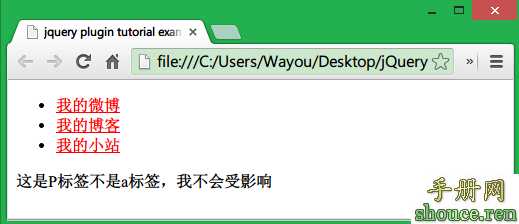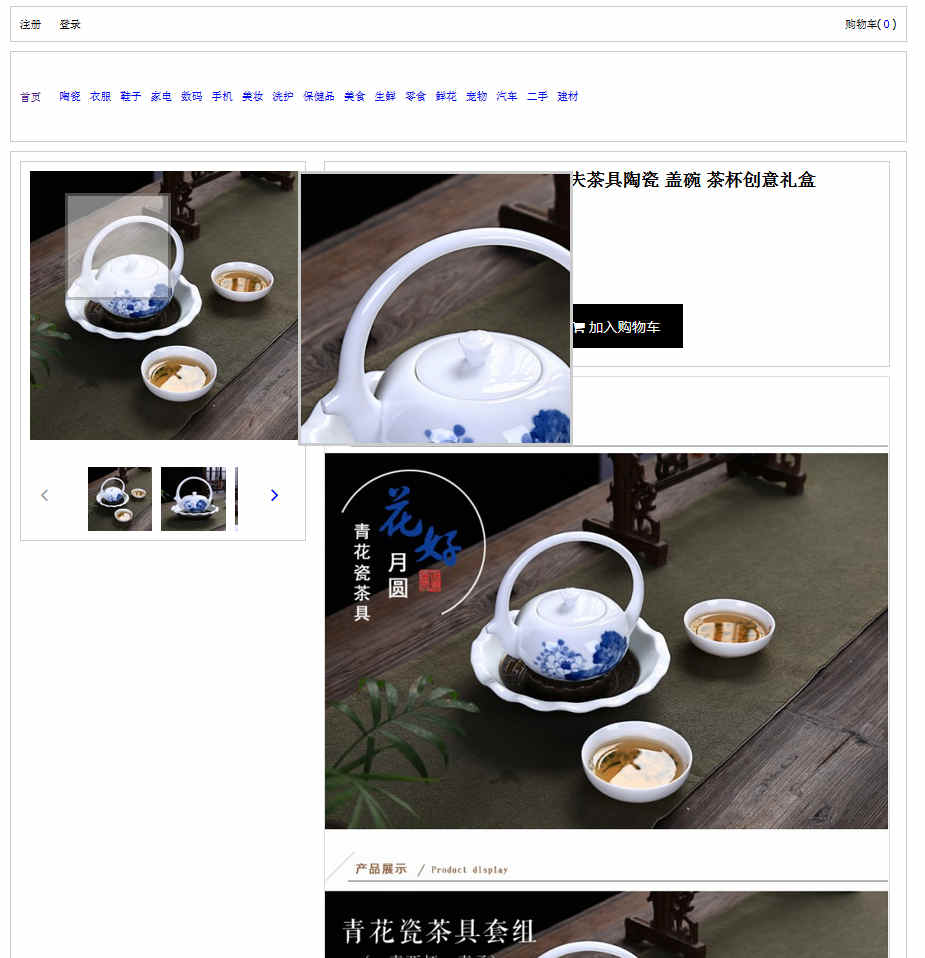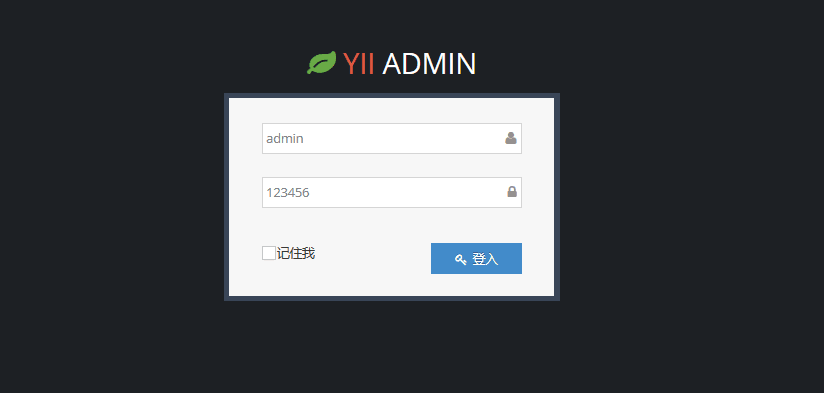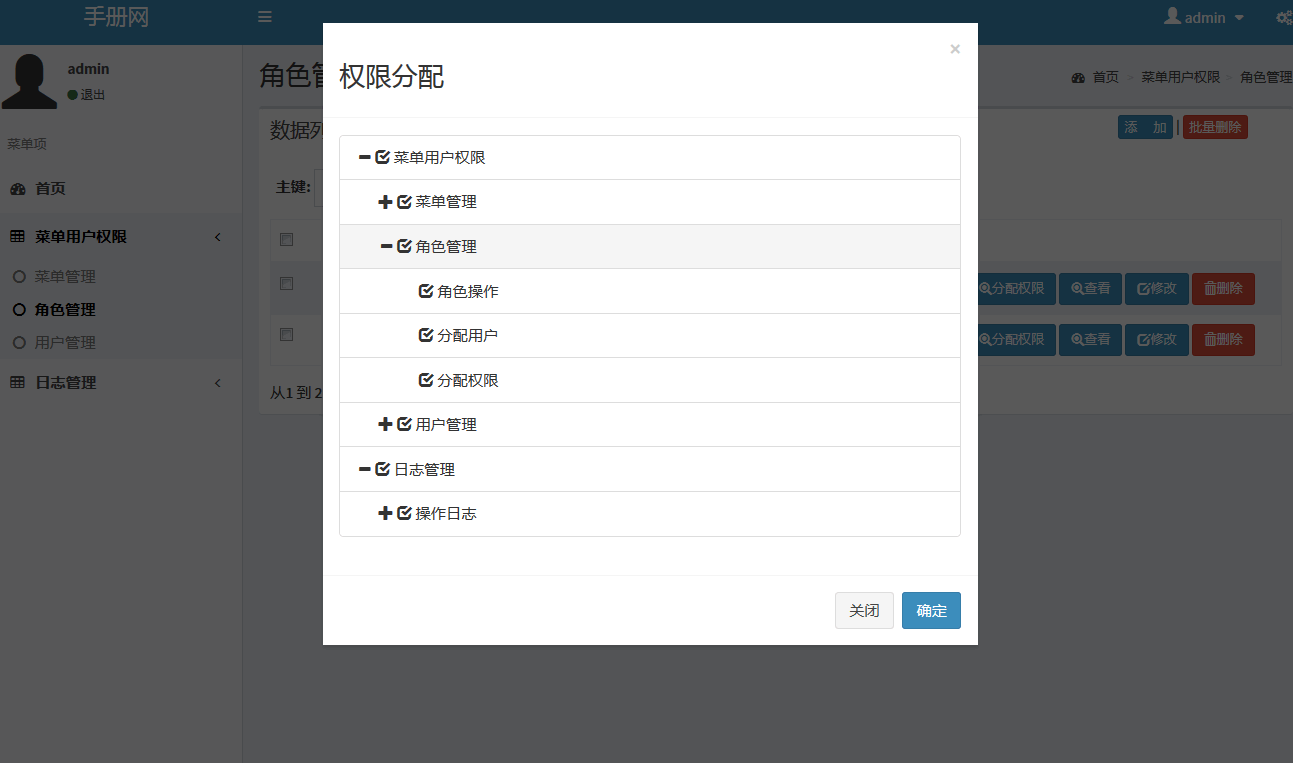Python 笔记
()help('What your wannt object') 看对像怎么用法,按key q退出
()在Python中有4种类型的数——整数、长整数、浮点数和复数。
* 2是一个整数的例子。
* 长整数不过是大一些的整数。
* 3.23和52.3E-4是浮点数的例子。E标记表示10的幂。在这里,52.3E-4表示52.3 * 10-4。
* (-5+4j)和(2.3-4.6j)是复数的例子。
()字符串
# 使用单引号(')
你可以用单引号指示字符串,就如同'Quote me on this'这样。所有的空白,即空格和制表符都照原样保留。
# 使用双引号(")
在双引号中的字符串与单引号中的字符串的使用完全相同,例如"What's your name?"。
# 使用三引号('''或""")
利用三引号,你可以指示一个多行的字符串。你可以在三引号中自由的使用单引号和双引号.
# 转义符 可以通过 转义符 来完成这个任务。你用\'来指示单引号——注意这个反斜杠。
@值得注意的一件事是,在一个字符串中,行末的单独一个反斜杠表示字符串在下一行继续,而不是开始一个新的行
# Unicode字符串: 字符串前加上前缀u或U。例如,u"This is a Unicode string."。
# 字符串是不可变的 这意味着一旦你创造了一个字符串,你就不能再改变它了。
第4章 基本概念
()对象 记住,Python把在程序中用到的任何东西都称为 对象 。
使用变量时只需要给它们赋一个值。不需要声明或定义数据类型。
()缩进 空白在Python中是重要的。事实上行首的空白是重要的。它称为缩进。
这意味着同一层次的语句必须有相同的缩进。每一组这样的语句称为一个块
NOTE: 如何缩进
不要混合使用制表符和空格来缩进,因为这在跨越不同的平台的时候,无法正常工作。我 强烈建议 你在每个缩进层次使用 单个制表符 或 两个或四个空格 。
选择这三种缩进风格之一。更加重要的是,选择一种风格,然后一贯地使用它,即 只 使用这一种风格。
() python 中的 if 条件语句是没有括号的,if 后要有冒号:
elif 是相当于else if
Python 的注释是用#开头的
() 在Python中没有switch语句。你可以使用if..elif..else语句来完成同样的工作(在某些场合,使用字典会更加快捷。)
()for循环
for..in是另外一个循环语句,它在一序列的对象上 递归 即逐一使用队列中的每个项目。我们会在后面的章节中更加详细地学习序列
()内建的range函数
range返回一个序列的数。这个序列从第一个数开始到第二个数为止。例如,range(1,5)给出序列[1, 2, 3, 4]。默认地,range的步长为1。
如果我们为range提供第三个数,那么它将成为步长。例如,range(1,5,2)给出[1,3]。记住,range 向上 延伸到第二个数,即它不包含第二个数。
记住,for..in循环对于任何序列都适用。
()len函数
第7章 函数
函数通过def关键字定义。def关键字后跟一个函数的 标识符 名称,然后跟一对圆括号。圆括号之中可以包括一些变量名,该行以冒号结尾。接下来是一块语句,它们是函数体。
例7.2 使用函数形参
# Filename: func_param.py
def printMax(a, b):
if a > b:
print a, 'is maximum'
else:
print b, 'is maximum'
printMax(3, 4) # directly give literal values
x = 5
y = 7
printMax(x, y) # give variables as arguments
()局部变量
当你在函数定义内声明变量的时候,它们与函数外具有相同名称的其他变量没有任何关系,即变量名称对于函数来说是 局部 的。这称为变量的 作用域 。所有变量的作用域是它们被定义的块,从它们的名称被定义的那点开始。
()默认参数值
对于一些函数,你可能希望它的一些参数是 可选 的,如果用户不想要为这些参数提供值的话,这些参数就使用默认值。这个功能借助于默认参数值完成。你可以在函数定义的形参名后加上赋值运算符(=)和默认值,从而给形参指定默认参数值。
注意,默认参数值应该是一个参数。更加准确的说,默认参数值应该是不可变的
例7.5 使用默认参数值:
# Filename: func_default.py
def say(message, times = 1):
print message * times
say('Hello')
say('World', 5)
重要:
只有在形参表末尾的那些参数可以有默认参数值,即你不能在声明函数形参的时候,先声明有默认值的形参而后声明没有默认值的形参。
关键参数 如果你的某个函数有许多参数,而你只想指定其中的一部分,那么你可以通过命名来为这些参数赋值——这被称作 关键参数 ——我们使用名字(关键字)而不是位置(我们前面所一直使用的方法)来给函数指定实参。
这样做有两个 优势 ——一,由于我们不必担心参数的顺序,使用函数变得更加简单了。二、假设其他参数都有默认值,我们可以只给我们想要的那些参数赋值。
例7.6 使用关键参数
# Filename: func_key.py
def func(a, b=5, c=10):
print 'a is', a, 'and b is', b, 'and c is', c
func(3, 7)
func(25, c=24)
func(c=50, a=100)
return语句
return语句用来从一个函数 返回 即跳出函数。我们也可选从函数 返回一个值 。
例7.7 使用字面意义上的语句
# Filename: func_return.py
def maximum(x, y):
if x > y:
return x
else:
return y
print maximum(2, 3)
()DocStrings
Python有一个很奇妙的特性,称为 文档字符串 ,它通常被简称为 docstrings 。DocStrings是一个重要的工具,由于它帮助你的程序文档更加简单易懂,你应该尽量使用它。你甚至可以在程序运行的时候,从函数恢复文档字符串!
例7.8 使用DocStrings
# Filename: func_doc.py
def printMax(x, y):
'''Prints the maximum of two numbers.
The two values must be integers.'''
x = int(x) # convert to integers, if possible
y = int(y)
if x > y:
print x, 'is maximum'
else:
print y, 'is maximum'
printMax(3, 5)
print printMax.__doc__
在函数的第一个逻辑行的字符串是这个函数的 文档字符串 。注意,DocStrings也适用于模块和类,我们会在后面相应的章节学习它们。
文档字符串的惯例是一个多行字符串,它的首行以大写字母开始,句号结尾。第二行是空行,从第三行开始是详细的描述。 强烈建议 你在你的函数中使用文档字符串时遵循这个惯例。
你可以使用__doc__(注意双下划线)调用printMax函数的文档字符串属性(属于函数的名称)。请记住Python把 每一样东西 都作为对象,包括这个函数。我们会在后面的类一章学习更多关于对象的知识。
如果你已经在Python中使用过help(),那么你已经看到过DocStings的使用了!它所做的只是抓取函数的__doc__属性,然后整洁地展示给你。你可以对上面这个函数尝试一下——只是在你的程序中包括help(printMax)。记住按q退出help。
自动化工具也可以以同样的方式从你的程序中提取文档。因此,我 强烈建议 你对你所写的任何正式函数编写文档字符串。随你的Python发行版附带的pydoc命令,与help()类似地使用DocStrings。
第8章 模块
模块基本上就是一个包含了所有你定义的函数和变量的文件。为了在其他程序中重用模块,模块的文件名必须以.py为扩展名。
()学习如何使用标准库模块
使用sys模块
例8.1 使用sys模块
# Filename: using_sys.py
import sys
print 'The command line arguments are:'
for i in sys.argv:
print i
print '\n\nThe PYTHONPATH is', sys.path, '\n'
首先,我们利用import语句 输入 sys模块。基本上,这句语句告诉Python,我们想要使用这个模块。sys模块包含了与Python解释器和它的环境有关的函数。
()from..import语句
如果你想要直接输入argv变量到你的程序中(避免在每次使用它时打sys.),那么你可以使用from sys import argv语句。如果你想要输入所有sys模块使用的名字,那么你可以使用from sys import *语句。这对于所有模块都适用。一般说来,应该避免使用from..import而使用import语句,因为这样可以使你的程序更加易读,也可以避免名称的冲突。
()制造你自己的模块
创建你自己的模块是十分简单的,你一直在这样做!每个Python程序也是一个模块。你已经确保它具有.py扩展名了。下面这个例子将会使它更加清晰。
例8.3 如何创建你自己的模块
# Filename: mymodule.py
def sayhi():
print 'Hi, this is mymodule speaking.'
version = '0.1'
# End of mymodule.py
上面是一个 模块 的例子。你已经看到,它与我们普通的Python程序相比并没有什么特别之处。我们接下来将看看如何在我们别的Python程序中使用这个模块。
记住这个模块应该被放置在我们输入它的程序的同一个目录中,或者在sys.path所列目录之一。
调用:
mymodule.sayhi()
print 'Version', mymodule.version
()下面是一个使用from..import语法的版本。
# Filename: mymodule_demo2.py
from mymodule import sayhi, version
# Alternative:
# from mymodule import *
sayhi()
print 'Version', version
()dir()函数
你可以使用内建的dir函数来列出模块定义的标识符。标识符有函数、类和变量。
e.g.
import sys
dir(sys)
第9章 数据结构
()列表
list是处理一组有序项目的数据结构,即你可以在一个列表中存储一个 序列 的项目。假想你有一个购物列表,上面记载着你要买的东西,你就容易理解列表了。只不过在你的购物表上,可能每样东西都独自占有一行,而在Python中,你在每个项目之间用逗号分割。
()元组
元组和列表十分类似,只不过元组和字符串一样是 不可变的 即你不能修改元组。元组通过圆括号中用逗号分割的项目定义。元组通常用在使语句或用户定义的函数能够安全地采用一组值的时候,即被使用的元组的值不会改变。
例9.2 使用元组
# Filename: using_tuple.py
zoo = ('wolf', 'elephant', 'penguin')
print 'Number of animals in the zoo is', len(zoo)
new_zoo = ('monkey', 'dolphin', zoo)
print 'Number of animals in the new zoo is', len(new_zoo)
print 'All animals in new zoo are', new_zoo
print 'Animals brought from old zoo are', new_zoo[2]
print 'Last animal brought from old zoo is', new_zoo[2][2]
()字典
字典类似于你通过联系人名字查找地址和联系人详细情况的地址簿,即,我们把键(名字)和值(详细情况)联系在一起。注意,键必须是唯一的,就像如果有两个人恰巧同名的话,你无法找到正确的信息。
注意,你只能使用不可变的对象(比如字符串)来作为字典的键,但是你可以不可变或可变的对象作为字典的值。基本说来就是,你应该只使用简单的对象作为键。
键值对在字典中以这样的方式标记:d = {key1 : value1, key2 : value2 }。注意它们的键/值对用冒号分割,而各个对用逗号分割,所有这些都包括在花括号中。
记住字典中的键/值对是没有顺序的。如果你想要一个特定的顺序,那么你应该在使用前自己对它们排序。
例9.4 使用字典
'Larry' : 'larry@wall.org',
'Matsumoto' : 'matz@ruby-lang.org',
'Spammer' : 'spammer@hotmail.com'
}
print "Swaroop's address is %s" % ab['Swaroop']
# Adding a key/value pair
ab['Guido'] = 'guido@python.org'
# Deleting a key/value pair
del ab['Spammer']
print '\nThere are %d contacts in the address-book\n' % len(ab)
for name, address in ab.items():
print 'Contact %s at %s' % (name, address)
if 'Guido' in ab: # OR ab.has_key('Guido')
print "\nGuido's address is %s" % ab['Guido']
()序列
列表、元组和字符串都是序列,但是序列是什么,它们为什么如此特别呢?序列的两个主要特点是索引操作符和切片操作符。索引操作符让我们可以从序列中抓取一个特定项目。切片操作符让我们能够获取序列的一个切片,即一部分序列。
例9.5 使用序列
# Filename: seq.py
shoplist = ['apple', 'mango', 'carrot', 'banana']
# Indexing or 'Subscription' operation
print 'Item 0 is', shoplist[0]
print 'Item 1 is', shoplist[1]
print 'Item 2 is', shoplist[2]
print 'Item 3 is', shoplist[3]
print 'Item -1 is', shoplist[-1]
print 'Item -2 is', shoplist[-2]
# Slicing on a list
print 'Item 1 to 3 is', shoplist[1:3]
print 'Item 2 to end is', shoplist[2:]
print 'Item 1 to -1 is', shoplist[1:-1]
print 'Item start to end is', shoplist[:]
# Slicing on a string
name = 'swaroop'
print 'characters 1 to 3 is', name[1:3]
print 'characters 2 to end is', name[2:]
print 'characters 1 to -1 is', name[1:-1]
print 'characters start to end is', name[:]
索引同样可以是负数,在那样的情况下,位置是从序列尾开始计算的。因此,shoplist[-1]表示序列的最后一个元素而shoplist[-2]抓取序列的倒数第二个项目。
切片操作符是序列名后跟一个方括号,方括号中有一对可选的数字,并用冒号分割。注意这与你使用的索引操作符十分相似。记住数是可选的,而冒号是必须的。
切片操作符中的第一个数(冒号之前)表示切片开始的位置,第二个数(冒号之后)表示切片到哪里结束。如果不指定第一个数,Python就从序列首开始。如果没有指定第二个数,则Python会停止在序列尾。注意,返回的序列从开始位置 开始 ,刚好在 结束 位置之前结束。即开始位置是包含在序列切片中的,而结束位置被排斥在切片外。
()参考
当你创建一个对象并给它赋一个变量的时候,这个变量仅仅 参考 那个对象,而不是表示这个对象本身!也就是说,变量名指向你计算机中存储那个对象的内存。这被称作名称到对象的绑定。
一般说来,你不需要担心这个,只是在参考上有些细微的效果需要你注意。这会通过下面这个例子加以说明。
例9.6 对象与参考
# Filename: reference.py
print 'Simple Assignment'
shoplist = ['apple', 'mango', 'carrot', 'banana']
mylist = shoplist # mylist is just another name pointing to the same object!
del shoplist[0]
print 'shoplist is', shoplist
print 'mylist is', mylist
# notice that both shoplist and mylist both print the same list without
# the 'apple' confirming that they point to the same object
print 'Copy by making a full slice'
mylist = shoplist[:] # make a copy by doing a full slice
del mylist[0] # remove first item
print 'shoplist is', shoplist
print 'mylist is', mylist
# notice that now the two lists are different
NOTE:
你需要记住的只是如果你想要复制一个列表或者类似的序列或者其他复杂的对象(不是如整数那样的简单 对象 ),那么你必须使用切片操作符来取得拷贝。如果你只是想要使用另一个变量名,两个名称都 参考 同一个对象,那么如果你不小心的话,可能会引来各种麻烦。
()更多字符串的内容
你是否知道字符串也是对象,同样具有方法。这些方法可以完成包括检验一部分字符串和去除空格在内的各种工作。
你在程序中使用的字符串都是str类的对象。这个类的一些有用的方法会在下面这个例子中说明。如果要了解这些方法的完整列表,请参见help(str)。
例9.7 字符串的方法
# Filename: str_methods.py
name = 'Swaroop' # This is a string object
if name.startswith('Swa'):
print 'Yes, the string starts with "Swa"'
if 'a' in name:
print 'Yes, it contains the string "a"'
if name.find('war') != -1:
print 'Yes, it contains the string "war"'
delimiter = '_*_'
mylist = ['Brazil', 'Russia', 'India', 'China']
print delimiter.join(mylist)
我们看到使用了许多字符串方法。startwith方法是用来测试字符串是否以给定字符串开始。in操作符用来检验一个给定字符串是否为另一个字符串的一部分。
find方法用来找出给定字符串在另一个字符串中的位置,或者返回-1以表示找不到子字符串。str类也有以一个作为分隔符的字符串join序列的项目的整洁的方法,它返回一个生成的大字符串。
第10章 解决问题——编写一个Python脚本
01) 问题
我提出的问题是: 我想要一个可以为我的所有重要文件创建备份的程序。
02) 解决方案
例10.1 备份脚本——版本一
# Filename: backup_ver1.py
import os
import time
# 1. The files and directories to be backed up are specified in a list.
source = ['/home/swaroop/byte', '/home/swaroop/bin']
# If you are using Windows, use source = [r'C:\Documents', r'D:\Work'] or something like that
# 2. The backup must be stored in a main backup directory
target_dir = '/mnt/e/backup/' # Remember to change this to what you will be using
# 3. The files are backed up into a zip file.
# 4. The name of the zip archive is the current date and time
target = target_dir + time.strftime('%Y%m%d%H%M%S') + '.zip'
# 5. We use the zip command (in Unix/Linux) to put the files in a zip archive
zip_command = "zip -qr '%s' %s" % (target, ' '.join(source))
# Run the backup
if os.system(zip_command) == 0:
print 'Successful backup to', target
else:
print 'Backup FAILED'
例10.2 备份脚本——版本二
# Filename: backup_ver2.py
import os
import time
# 1. The files and directories to be backed up are specified in a list.
source = ['/home/swaroop/byte', '/home/swaroop/bin']
# If you are using Windows, use source = [r'C:\Documents', r'D:\Work'] or something like that
# 2. The backup must be stored in a main backup directory
target_dir = '/mnt/e/backup/' # Remember to change this to what you will be using
# 3. The files are backed up into a zip file.
# 4. The current day is the name of the subdirectory in the main directory
today = target_dir + time.strftime('%Y%m%d')
# The current time is the name of the zip archive
now = time.strftime('%H%M%S')
# Create the subdirectory if it isn't already there
if not os.path.exists(today):
os.mkdir(today) # make directory
print 'Successfully created directory', today
# The name of the zip file
target = today + os.sep + now + '.zip'
# 5. We use the zip command (in Unix/Linux) to put the files in a zip archive
zip_command = "zip -qr '%s' %s" % (target, ' '.join(source))
# Run the backup
if os.system(zip_command) == 0:
print 'Successful backup to', target
else:
print 'Backup FAILED'
例10.3 备份脚本——版本三(不工作!)
# Filename: backup_ver3.py
import os
import time
# 1. The files and directories to be backed up are specified in a list.
source = ['/home/swaroop/byte', '/home/swaroop/bin']
# If you are using Windows, use source = [r'C:\Documents', r'D:\Work'] or something like that
# 2. The backup must be stored in a main backup directory
target_dir = '/mnt/e/backup/' # Remember to change this to what you will be using
# 3. The files are backed up into a zip file.
# 4. The current day is the name of the subdirectory in the main directory
today = target_dir + time.strftime('%Y%m%d')
# The current time is the name of the zip archive
now = time.strftime('%H%M%S')
# Take a comment from the user to create the name of the zip file
comment = raw_input('Enter a comment --> ')
if len(comment) == 0: # check if a comment was entered
target = today + os.sep + now + '.zip'
else:
target = today + os.sep + now + '_' +
comment.replace(' ', '_') + '.zip'
# Create the subdirectory if it isn't already there
if not os.path.exists(today):
os.mkdir(today) # make directory
print 'Successfully created directory', today
# 5. We use the zip command (in Unix/Linux) to put the files in a zip archive
zip_command = "zip -qr '%s' %s" % (target, ' '.join(source))
# Run the backup
if os.system(zip_command) == 0:
print 'Successful backup to', target
else:
print 'Backup FAILED'
例10.4 备份脚本——版本四
# Filename: backup_ver4.py
import os
import time
# 1. The files and directories to be backed up are specified in a list.
source = ['/home/swaroop/byte', '/home/swaroop/bin']
# If you are using Windows, use source = [r'C:\Documents', r'D:\Work'] or something like that
# 2. The backup must be stored in a main backup directory
target_dir = '/mnt/e/backup/' # Remember to change this to what you will be using
# 3. The files are backed up into a zip file.
# 4. The current day is the name of the subdirectory in the main directory
today = target_dir + time.strftime('%Y%m%d')
# The current time is the name of the zip archive
now = time.strftime('%H%M%S')
# Take a comment from the user to create the name of the zip file
comment = raw_input('Enter a comment --> ')
if len(comment) == 0: # check if a comment was entered
target = today + os.sep + now + '.zip'
else:
target = today + os.sep + now + '_' + \
comment.replace(' ', '_') + '.zip'
# Notice the backslash!
# Create the subdirectory if it isn't already there
if not os.path.exists(today):
os.mkdir(today) # make directory
print 'Successfully created directory', today
# 5. We use the zip command (in Unix/Linux) to put the files in a zip archive
zip_command = "zip -qr '%s' %s" % (target, ' '.join(source))
# Run the backup
if os.system(zip_command) == 0:
print 'Successful backup to', target
else:
print 'Backup FAILED'
第11章 面向对象的编程
()self
类的方法与普通的函数只有一个特别的区别——它们必须有一个额外的第一个参数名称,但是在调用这个方法的时候你不为这个参数赋值,Python会提供这个值。这个特别的变量指对象本身,按照惯例它的名称是self。
NOTE:
Python中的self等价于C++中的self指针和Java、C#中的this参考。
()类
一个尽可能简单的类如下面这个例子所示。
例11.1 创建一个类:
# Filename: simplestclass.py
class Person:
pass # An empty block
p = Person()
print p
*class语句后跟类名,创建了一个新的类。
*我们使用类名后跟一对圆括号来创建一个对象/实例。## 不像java,C#这些语言用new 类名来实例化。
()对象的方法
例11.2 使用对象的方法:
# Filename: method.py
class Person:
def sayHi(self):
print 'Hello, how are you?'
p = Person()
p.sayHi()
# This short example can also be written as Person().sayHi()
*注意sayHi方法没有任何参数,但仍然在函数定义时有self。
() __init__方法
__init__方法在类的一个对象被建立时,马上运行。这个方法可以用来对你的对象做一些你希望的 初始化 。注意,这个名称的开始和结尾都是双下划线。
例11.3 使用__init__方法
# Filename: class_init.py
class Person:
def __init__(self, name):
self.name = name
def sayHi(self):
print 'Hello, my name is', self.name
p = Person('Swaroop')
p.sayHi()
# This short example can also be written as Person('Swaroop').sayHi()
__init__方法定义为取一个参数name(以及普通的参数self)。在这个__init__里,我们只是创建一个新的域,也称为name。注意它们是两个不同的变量,尽管它们有相同的名字。点号使我们能够区分它们。
最重要的是,我们没有专门调用__init__方法,只是在创建一个类的新实例的时候,把参数包括在圆括号内跟在类名后面,从而传递给__init__方法。这是这种方法的重要之处。
现在,我们能够在我们的方法中使用self.name域。这在sayHi方法中得到了验证。
NOTE:
__init__方法类似于C++、C#和Java中的 constructor 。
()类与对象的方法
有两种类型的 域 ——类的变量和对象的变量,它们根据是类还是对象 拥有 这个变量而区分。
类的变量 由一个类的所有对象(实例)共享使用。只有一个类变量的拷贝,所以当某个对象对类的变量做了改动的时候,这个改动会反映到所有其他的实例上。
对象的变量 由类的每个对象/实例拥有。因此每个对象有自己对这个域的一份拷贝,即它们不是共享的,在同一个类的不同实例中,虽然对象的变量有相同的名称,但是是互不相关的。通过一个例子会使这个易于理解。
例11.4 使用类与对象的变量
# Filename: objvar.py
class Person:
'''Represents a person.'''
population = 0
def __init__(self, name):
'''Initializes the person's data.'''
self.name = name
print '(Initializing %s)' % self.name
# When this person is created, he/she
# adds to the population
Person.population += 1
def __del__(self):
'''I am dying.'''
print '%s says bye.' % self.name
Person.population -= 1
if Person.population == 0:
print 'I am the last one.'
else:
print 'There are still %d people left.' % Person.population
def sayHi(self):
'''Greeting by the person.
Really, that's all it does.'''
print 'Hi, my name is %s.' % self.name
def howMany(self):
'''Prints the current population.'''
if Person.population == 1:
print 'I am the only person here.'
else:
print 'We have %d persons here.' % Person.population
swaroop = Person('Swaroop')
swaroop.sayHi()
swaroop.howMany()
kalam = Person('Abdul Kalam')
kalam.sayHi()
kalam.howMany()
swaroop.sayHi()
swaroop.howMany()
观察可以发现__init__方法用一个名字来初始化Person实例。在这个方法中,我们让population增加1,这是因为我们增加了一个人。同样可以发现,self.name的值根据每个对象指定,这表明了它作为对象的变量的本质。
记住,你只能使用self变量来参考同一个对象的变量和方法。这被称为 属性参考 。
在这个程序中,我们还看到docstring对于类和方法同样有用。我们可以在运行时使用Person.__doc__和Person.sayHi.__doc__来分别访问类与方法的文档字符串。
就如同__init__方法一样,还有一个特殊的方法__del__,它在对象消逝的时候被调用。对象消逝即对象不再被使用,它所占用的内存将返回给系统作它用。在这个方法里面,我们只是简单地把Person.population减1。
* Python中所有的类成员(包括数据成员)都是 公共的 ,所有的方法都是 有效的 。
只有一个例外:如果你使用的数据成员名称以 双下划线前缀 比如__privatevar,Python的名称管理体系会有效地把它作为私有变量。
这样就有一个惯例,如果某个变量只想在类或对象中使用,就应该以单下划线前缀。而其他的名称都将作为公共的,可以被其他类/对象使用。记住这只是一个惯例,并不是Python所要求的(与双下划线前缀不同)。
同样,注意__del__方法与 destructor 的概念类似。
()继承
面向对象的编程带来的主要好处之一是代码的重用,实现这种重用的方法之一是通过 继承 机制。继承完全可以理解成类之间的 类型和子类型 关系。
例11.5 使用继承
# Filename: inherit.py
class SchoolMember:
'''Represents any school member.'''
def __init__(self, name, age):
self.name = name
self.age = age
print '(Initialized SchoolMember: %s)' % self.name
def tell(self):
'''Tell my details.'''
print 'Name:"%s" Age:"%s"' % (self.name, self.age),
class Teacher(SchoolMember):
'''Represents a teacher.'''
def __init__(self, name, age, salary):
SchoolMember.__init__(self, name, age)
self.salary = salary
print '(Initialized Teacher: %s)' % self.name
def tell(self):
SchoolMember.tell(self)
print 'Salary: "%d"' % self.salary
class Student(SchoolMember):
'''Represents a student.'''
def __init__(self, name, age, marks):
SchoolMember.__init__(self, name, age)
self.marks = marks
print '(Initialized Student: %s)' % self.name
def tell(self):
SchoolMember.tell(self)
print 'Marks: "%d"' % self.marks
t = Teacher('Mrs. Shrividya', 40, 30000)
s = Student('Swaroop', 22, 75)
print # prints a blank line
members = [t, s]
for member in members:
member.tell() # works for both Teachers and Students
为了使用继承,我们把基本类的名称作为一个元组跟在定义类时的类名称之后。然后,我们注意到基本类的__init__方法专门使用self变量调用,这样我们就可以初始化对象的基本类部分。这一点十分重要——Python不会自动调用基本类的constructor,你得亲自专门调用它。
一个术语的注释——如果在继承元组中列了一个以上的类,那么它就被称作 多重继承 。
第12章 输入/输出
你会想要让你的程序与用户(可能是你自己)交互。你会从用户那里得到输入,然后打印一些结果。我们可以分别使用raw_input和print语句来完成这些功能。对于输出,你也可以使用多种多样的str(字符串)类。例如,你能够使用rjust方法来得到一个按一定宽度右对齐的字符串。利用help(str)获得更多详情。
()文件
你可以通过创建一个file类的对象来打开一个文件,分别使用file类的read、readline或write方法来恰当地读写文件。对文件的读写能力依赖于你在打开文件时指定的模式。最后,当你完成对文件的操作的时候,你调用close方法来告诉Python我们完成了对文件的使用。
例12.1 使用文件
# Filename: using_file.py
poem = '''\
Programming is fun
When the work is done
if you wanna make your work also fun:
use Python!
'''
f = file('poem.txt', 'w') # open for 'w'riting
f.write(poem) # write text to file
f.close() # close the file
f = file('poem.txt')
# if no mode is specified, 'r'ead mode is assumed by default
while True:
line = f.readline()
if len(line) == 0: # Zero length indicates EOF
break
print line,
# Notice comma to avoid automatic newline added by Python
f.close() # close the file
我们通过指明我们希望打开的文件和模式来创建一个file类的实例。模式可以为读模式('r')、写模式('w')或追加模式('a')。事实上还有多得多的模式可以使用,你可以使用help(file)来了解它们的详情。
我们首先用写模式打开文件,然后使用file类的write方法来写文件,最后我们用close关闭这个文件。
接下来,我们再一次打开同一个文件来读文件。如果我们没有指定模式,读模式会作为默认的模式。在一个循环中,我们使用readline方法读文件的每一行。这个方法返回包括行末换行符的一个完整行。所以,当一个 空的 字符串被返回的时候,即表示文件末已经到达了,于是我们停止循环。
注意,因为从文件读到的内容已经以换行符结尾,所以我们在print语句上使用逗号来消除自动换行。最后,我们用close关闭这个文件。
()储存器
Python提供一个标准的模块,称为pickle。使用它你可以在一个文件中储存任何Python对象,之后你又可以把它完整无缺地取出来。这被称为 持久地 储存对象。
还有另一个模块称为cPickle,它的功能和pickle模块完全相同,只不过它是用C语言编写的,因此要快得多(比pickle快1000倍)。你可以使用它们中的任一个,而我们在这里将使用cPickle模块。记住,我们把这两个模块都简称为pickle模块。
例12.2 储存与取储存
# Filename: pickling.py
import cPickle as p
#import pickle as p
shoplistfile = 'shoplist.data'
# the name of the file where we will store the object
shoplist = ['apple', 'mango', 'carrot']
# Write to the file
f = file(shoplistfile, 'w')
p.dump(shoplist, f) # dump the object to a file
f.close()
del shoplist # remove the shoplist
# Read back from the storage
f = file(shoplistfile)
storedlist = p.load(f)
print storedlist
首先,请注意我们使用了import..as语法。这是一种便利方法,以便于我们可以使用更短的模块名称。在这个例子中,它还让我们能够通过简单地改变一行就切换到另一个模块(cPickle或者pickle)!在程序的其余部分的时候,我们简单地把这个模块称为p。
为了在文件里储存一个对象,首先以写模式打开一个file对象,然后调用储存器模块的dump函数,把对象储存到打开的文件中。这个过程称为 储存 。
接下来,我们使用pickle模块的load函数的返回来取回对象。这个过程称为 取储存 。
第13章 异常
当你的程序中出现某些 异常的 状况的时候,异常就发生了。例如,当你想要读某个文件的时候,而那个文件不存在。或者在程序运行的时候,你不小心把它删除了。上述这些情况可以使用异常来处理。
()错误
考虑一个简单的print语句。假如我们把print误拼为Print,注意大写,这样Python会 引发 一个语法错误。
>>> Print 'Hello World'
File "<stdin>", line 1
Print 'Hello World'
^
SyntaxError: invalid syntax
>>> print 'Hello World'
Hello World
我们可以观察到有一个SyntaxError被引发,并且检测到的错误位置也被打印了出来。这是这个错误的 错误处理器 所做的工作。
() try..except
我们尝试读取用户的一段输入。按Ctrl-d,看一下会发生什么。
>>> s = raw_input('Enter something --> ')
Enter something --> Traceback (most recent call last):
File "<stdin>", line 1, in ?
EOFError
Python引发了一个称为EOFError的错误,这个错误基本上意味着它发现一个不期望的 文件尾 (由Ctrl-d表示)
接下来,我们将学习如何处理这样的错误。
()处理异常
我们可以使用try..except语句来处理异常。我们把通常的语句放在try-块中,而把我们的错误处理语句放在except-块中。
例13.1 处理异常
# Filename: try_except.py
import sys
try:
s = raw_input('Enter something --> ')
except EOFError:
print '\nWhy did you do an EOF on me?'
sys.exit() # exit the program
except:
print '\nSome error/exception occurred.'
# here, we are not exiting the program
print 'Done'
我们把所有可能引发错误的语句放在try块中,然后在except从句/块中处理所有的错误和异常。except从句可以专门处理单一的错误或异常,或者一组包括在圆括号内的错误/异常。如果没有给出错误或异常的名称,它会处理 所有的 错误和异常。对于每个try从句,至少都有一个相关联的except从句。
()引发异常
你可以使用raise语句 引发 异常。你还得指明错误/异常的名称和伴随异常 触发的 异常对象。你可以引发的错误或异常应该分别是一个Error或Exception类的直接或间接导出类。
例13.2 如何引发异常
# Filename: raising.py
class ShortInputException(Exception):
'''A user-defined exception class.'''
def __init__(self, length, atleast):
Exception.__init__(self)
self.length = length
self.atleast = atleast
try:
s = raw_input('Enter something --> ')
if len(s) < 3:
raise ShortInputException(len(s), 3)
# Other work can continue as usual here
except EOFError:
print '\nWhy did you do an EOF on me?'
except ShortInputException, x:
print 'ShortInputException: The input was of length %d, \
was expecting at least %d' % (x.length, x.atleast)
else:
print 'No exception was raised.'
这里,我们创建了我们自己的异常类型,其实我们可以使用任何预定义的异常/错误。这个新的异常类型是ShortInputException类。它有两个域——length是给定输入的长度,atleast则是程序期望的最小长度。
()try..finally
假如你在读一个文件的时候,希望在无论异常发生与否的情况下都关闭文件,该怎么做呢?这可以使用finally块来完成。注意,在一个try块下,你可以同时使用except从句和finally块。如果你要同时使用它们的话,需要把一个嵌入另外一个。
我们进行通常的读文件工作,但是我有意在每打印一行之前用time.sleep方法暂停2秒钟。这样做的原因是让程序运行得慢一些(Python由于其本质通常运行得很快)。在程序运行的时候,按Ctrl-c中断/取消程序。
第14章 Python标准库
Python标准库是随Python附带安装的,它包含大量极其有用的模块。熟悉Python标准库是十分重要的,因为如果你熟悉这些库中的模块,那么你的大多数问题都可以简单快捷地使用它们来解决。
()sys模块
sys模块包含系统对应的功能。我们已经学习了sys.argv列表,它包含命令行参数。
例14.1 使用sys.argv
# Filename: cat.py
import sys
def readfile(filename):
'''Print a file to the standard output.'''
f = file(filename)
while True:
line = f.readline()
if len(line) == 0:
break
print line, # notice comma
f.close()
# Script starts from here
if len(sys.argv) < 2:
print 'No action specified.'
sys.exit()
if sys.argv[1].startswith('--'):
option = sys.argv[1][2:]
# fetch sys.argv[1] but without the first two characters
if option == 'version':
print 'Version 1.2'
elif option == 'help':
print '''\
This program prints files to the standard output.
Any number of files can be specified.
Options include:
--version : Prints the version number
--help : Display this help'''
else:
print 'Unknown option.'
sys.exit()
else:
for filename in sys.argv[1:]:
readfile(filename)
()os模块
这个模块包含普遍的操作系统功能。如果你希望你的程序能够与平台无关的话,这个模块是尤为重要的。即它允许一个程序在编写后不需要任何改动,也不会发生任何问题,就可以在Linux和Windows下运行。一个例子就是使用os.sep可以取代操作系统特定的路径分割符。
下面列出了一些在os模块中比较有用的部分。它们中的大多数都简单明了。
*
os.name字符串指示你正在使用的平台。比如对于Windows,它是'nt',而对于Linux/Unix用户,它是'posix'。
*
os.getcwd()函数得到当前工作目录,即当前Python脚本工作的目录路径。
*
os.getenv()和os.putenv()函数分别用来读取和设置环境变量。
*
os.listdir()返回指定目录下的所有文件和目录名。
*
os.remove()函数用来删除一个文件。
*
os.system()函数用来运行shell命令。
*
os.linesep字符串给出当前平台使用的行终止符。例如,Windows使用'\r\n',Linux使用'\n'而Mac使用'\r'。
*
os.path.split()函数返回一个路径的目录名和文件名。
>>> os.path.split('/home/swaroop/byte/code/poem.txt')
('/home/swaroop/byte/code', 'poem.txt')
*
os.path.isfile()和os.path.isdir()函数分别检验给出的路径是一个文件还是目录。类似地,os.path.existe()函数用来检验给出的路径是否真地存在。
你可以利用Python标准文档去探索更多有关这些函数和变量的详细知识。你也可以使用help(sys)等等。
第15章 更多Python的内容
()特殊的方法
在类中有一些特殊的方法具有特殊的意义,比如__init__和__del__方法,它们的重要性我们已经学习过了。
一般说来,特殊的方法都被用来模仿某个行为。例如,如果你想要为你的类使用x[key]这样的索引操作(就像列表和元组一样),那么你只需要实现__getitem__()方法就可以了。想一下,Python就是对list类这样做的
表15.1 一些特殊的方法
名称 说明
__init__(self,...) 这个方法在新建对象恰好要被返回使用之前被调用。
__del__(self) 恰好在对象要被删除之前调用。
__str__(self) 在我们对对象使用print语句或是使用str()的时候调用。
__lt__(self,other) 当使用 小于 运算符(<)的时候调用。类似地,对于所有的运算符(+,>等等)都有特殊的方法。
__getitem__(self,key) 使用x[key]索引操作符的时候调用。
__len__(self) 对序列对象使用内建的len()函数的时候调用。
()单语句块
现在,你已经很深刻地理解了每一个语句块是通过它的缩进层次与其它块区分开来的。然而这在大多数情况下是正确的,但是并非100%的准确。如果你的语句块只包含一句语句,那么你可以在条件语句或循环语句的同一行指明它。下面这个例子清晰地说明了这一点:
>>> flag = True
>>> if flag: print 'Yes'
...
Yes
就如你所看见的,单个语句被直接使用而不是作为一个独立的块使用。虽然这样做可以使你的程序变得 小一些 ,但是除了检验错误之外我强烈建议你不要使用这种缩略方法。不使用它的一个主要的理由是一旦你使用了恰当的缩进,你就可以很方便地添加一个额外的语句。
另外,注意在使用交互模式的Python解释器的时候,它会通过恰当地改变提示符来帮助你输入语句。在上面这个例子中,当你输入了关键字if之后,Python解释器把提示符改变为...以表示语句还没有结束。在这种情况下,我们按回车键用来确认语句已经完整了。然后,Python完成整个语句的执行,并且返回原来的提示符并且等待下一句输入。
()列表综合:
通过列表综合,可以从一个已有的列表导出一个新的列表。例如,你有一个数的列表,而你想要得到一个对应的列表,使其中所有大于2的数都是原来的2倍。对于这种应用,列表综合是最理想的方法。
例15.1 使用列表综合
#!/usr/bin/python
# Filename: list_comprehension.py
listone = [2, 3, 4]
listtwo = [2*i for i in listone if i > 2]
print listtwo
这里我们为满足条件(if i > 2)的数指定了一个操作(2*i),从而导出一个新的列表。注意原来的列表并没有发生变化。在很多时候,我们都是使用循环来处理列表中的每一个元素,而使用列表综合可以用一种更加精确、简洁、清楚的方法完成相同的工作。
()在函数中接收元组和列表
当要使函数接收元组或字典形式的参数的时候,有一种特殊的方法,它分别使用*和**前缀。这种方法在函数需要获取可变数量的参数的时候特别有用。
>>> def powersum(power, *args):
... '''Return the sum of each argument raised to specified power.'''
... total = 0
... for i in args:
... total += pow(i, power)
... return total
...
>>> powersum(2, 3, 4)
25
>>> powersum(2, 10)
100
由于在args变量前有*前缀,所有多余的函数参数都会作为一个元组存储在args中。如果使用的是**前缀,多余的参数则会被认为是一个字典的键/值对。
() lambda形式
lambda语句被用来创建新的函数对象,并且在运行时返回它们。
例15.2 使用lambda形式
# Filename: lambda.py
def make_repeater(n):
return lambda s: s*n
twice = make_repeater(2)
print twice('word')
print twice(5)
输出
wordword
10
这里,我们使用了make_repeater函数在运行时创建新的函数对象,并且返回它。lambda语句用来创建函数对象。本质上,lambda需要一个参数,后面仅跟单个表达式作为函数体,而表达式的值被这个新建的函数返回。注意,即便是print语句也不能用在lambda形式中,只能使用表达式。
()exec和eval语句
exec语句用来执行储存在字符串或文件中的Python语句。例如,我们可以在运行时生成一个包含Python代码的字符串,然后使用exec语句执行这些语句。下面是一个简单的例子。
例:
>>> exec 'print "Hello World"'
Hello World
>>> eval('2*3')
6
() assert语句
assert语句用来声明某个条件是真的。例如,如果你非常确信某个你使用的列表中至少有一个元素,而你想要检验这一点,并且在它非真的时候引发一个错误,那么assert语句是应用在这种情形下的理想语句。当assert语句失败的时候,会引发一个AssertionError。
例:
>>> assert len(mylist) >= 1
>>> mylist.pop()
'item'
>>> assert len(mylist) >= 1
Traceback (most recent call last):
File "<stdin>", line 1, in ?
AssertionError
() repr函数
repr函数用来取得对象的规范字符串表示。反引号(也称转换符)可以完成相同的功能。注意,在大多数时候有eval(repr(object)) == object。
例:
>>> i.append('item')
>>> `i`
"['item']"
>>> repr(i)
"['item']"














